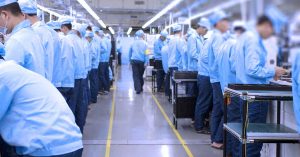As David Collins from CMC often says, there are 5 key success factors that determine a factory’s performance: Production Planning, Incoming Material, Workforce Training, Process Control and Equipment Maintenance.
In this article, I’d like to focus two of these success factors: workforce training and process control.
And, more specifically, on the way to evaluate how manufacturing processes were defined and how they are kept in place in daily practice.
I am reading the latest edition of a great book (Creating a Lean Culture by David Mann) and I found a nice set of questions that can be used by managers, or by external auditors, to evaluate those aspects.
Defining processes
Good factories generally don’t say: “Hey, production team, here is a new product to make, so please figure it out by yourself”.
They have process engineers who study the needs and prepare a relatively efficient and low-risk approach to make that new product.
Here is the checklist suggested by David Mann:
-
Are there documented definitions for all production and production support processes? Where is the documentation located?
-
Is the documentation current? Does it match actual practice?
-
Is standard work available for production tasks? For how many levels of takt time? Is it posted?
-
Are operator balance charts available, for each takt, and posted in the areas they reflect?
-
Are definitions available, and posted, for tasks in the management process (e.g., who fills in charts, standard meeting agendas, etc.)?
-
Are job breakdown sheets used for process documentation? For training? Who maintains them? Are they current?
Yes, this is relatively advanced. Asian factories that produce for oversea customers very seldom take time into account. And job breakdown sheets make sense only for high-volume productions.
However, aside from the two elements I just mentioned, there is nothing here that does not apply to most fabrication and assembly/packing operations.
Now, putting all this in place and training operators about it is great, but far from enough…
Maintaining process discipline
Management has to do the ongoing work of ensuring the standards are still applied.
(I should mention that “discipline” here doesn’t mean applying personal penalties or hitting people… But repeat offenders are requested to explain their lack of care for the process and may be asked to leave the company.)
Here are 6 aspects that can be evaluated:
-
Are defined processes regularly followed (e.g. 5S, punctuality, non-cyclical audits, PPE, etc.)?
-
Do crisis situations result in shortcutting processes (e.g., production tracking, rotation, kanban triggers, etc.)?
-
Are manufacturing process audits carried out? Are support process audits carried out? By the leaders in the area or by outsiders?
-
When audits or tracking turn up noncompliance or misses, are problem-solving tools used?
-
To what degree does process focus lead to process improvement activity? Is there observable visual evidence?
-
How regularly do leaders conduct gemba walks to teach as well as to inspect? How many leaders do so?
As you can see, that’s an evaluation of the local leaders’, internal auditors’, and support engineers’ work. There is a lot of work on their plates. But that’s the cost of running consistently performant operations and of keeping improvement activities up.
*****
What about your factory(ies)? Do they have routines in place to set processes up (at least for orders that are expected to repeat and to be at a sufficient volume)? And to keep those processes running well over time? How do you monitor that?
Ultimate Guide To Sourcing From China And Developing Your Suppliers [eBook]
This FREE eBook starts from the beginning, discussing whether you need to hire a sourcing agent, and follows the sourcing process right through to developing a trusted supplier’s quality and productivity.
There are 15 chapters over 80+ pages to explore, providing exhaustive guidance on the entire sourcing and supplier development process from start to finish, including:
- Identifying suppliers,
- Negotiations,
- Quality inspections,
- Developing Chinese suppliers,
- Improving factory quality and productivity,
- and much more…


